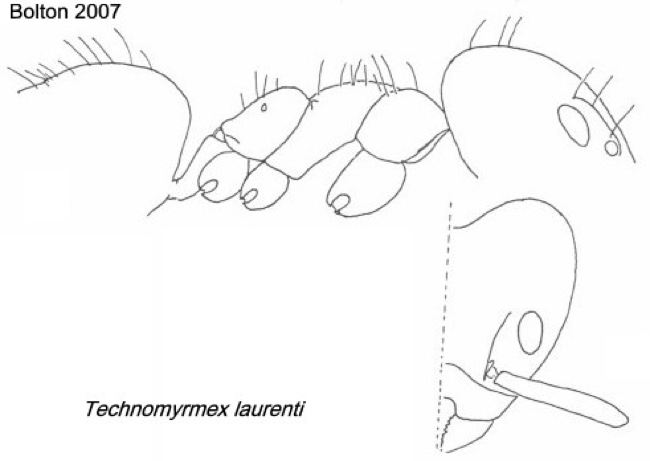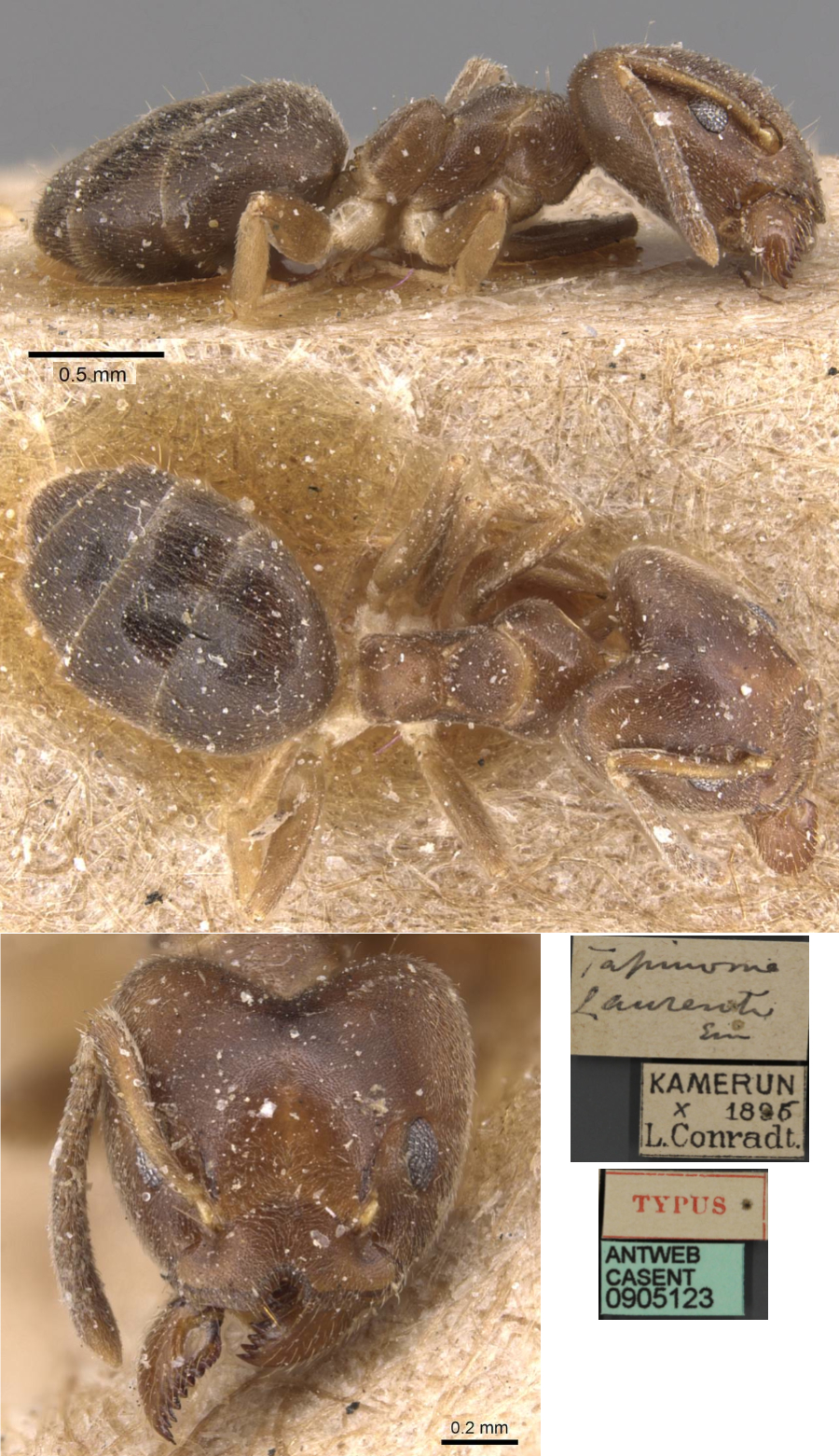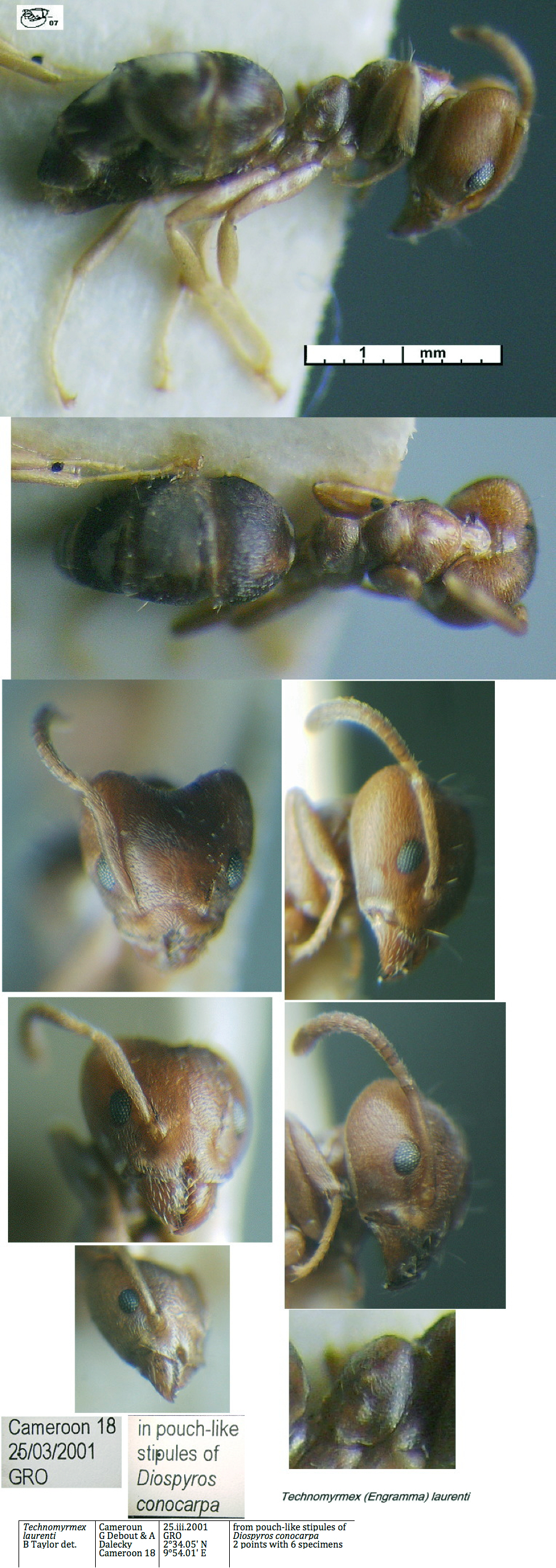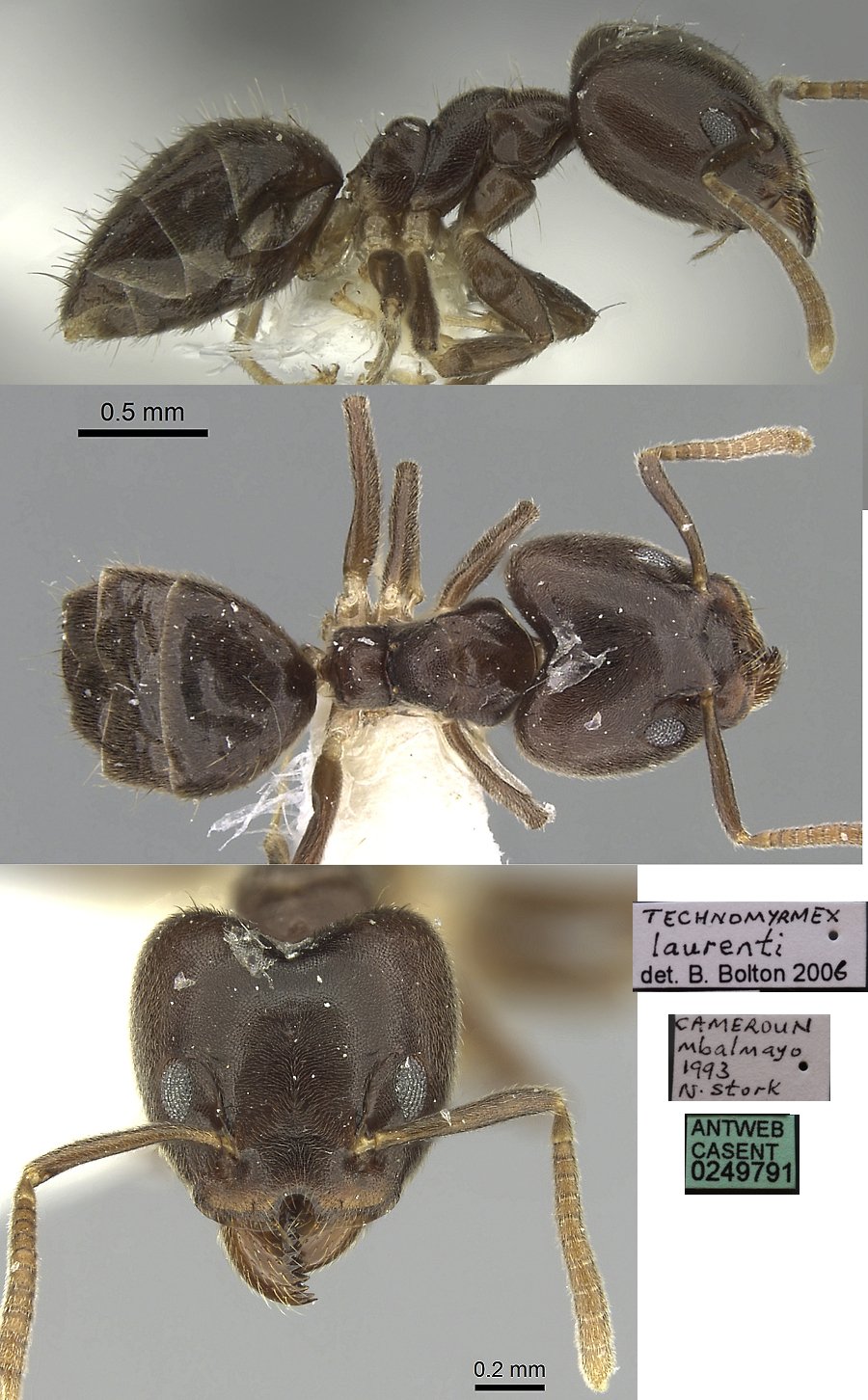Technomyrmex (Engramma) laurenti (Emery)
  Type location Zaïre (Tapinoma
Laurenti n.sp., Emery, 1899e: 487, worker & queen; in Engramma by Emery, 1912g:
38; in Technomyrmex by
Shattuck, 1992c: 161) collected by Laurent - see below Type location Zaïre (Tapinoma
Laurenti n.sp., Emery, 1899e: 487, worker & queen; in Engramma by Emery, 1912g:
38; in Technomyrmex by
Shattuck, 1992c: 161) collected by Laurent - see below
subspecies congolense (Emgramma
Laurenti Em., v. congolensis
n. var., Forel, 1916:
431, worker & queen; from a "myrmecophilous plant", in Wheeler,
1922) from Zaïre, collected by H Kohl - see http://www.antweb.org/specimenImages.do?code=casent0909755
worker and queen only
described (Bolton, 1995: 402)  . .
|
Emery's (1899e) description is at  and Forel's (1916) description of ssp congolensis
is at and Forel's (1916) description of ssp congolensis
is at  . .
Also from Cameroun (by Conradt, in Wheeler,
1922).
Mentioned by McKey (1984) as sometimes found to have cut
an entrance hole into an internode of the myrmecophilous understorey
tree, Leonardoxa africana africana (see McKey studies). Note - this was McKey's
earliest paper on the topic and yet he makes no further reference to
this species.
Head and alitrunk densely spiculate with overlaying
dense fine decumbent pilosity. The mandibles have six large teeth
subtended by 5 small but distinct teeth. Overall the specimens have a
stocky appearance, with a relatively large head, and short quite thick
funiculi. Propodeum with short convex dorsum and steep declivity.
|
 Bolton's
(2007: 25) re-description is at Bolton's
(2007: 25) re-description is at  . .
Bolton (2007) appears to have lumped all specimens of
approximately the same general form, i.e. with a strongly cordiform
head and deep semi-circular clypeal notch into a single species.
Although he acknowledges smaller specimens have a higher SI and
relatively larger eyes he does not give any information on variation
(if any) within specimens recorded from a specific nest. Colour
variation is discounted as of any significance.
I have sighted workers from two sites (nests) on
separate plant species in
Cameroun. The difference is consistent and so marked that I cannot
accept Bolton's lumping. Thus, specimens of Technomyrmex
kohli (Forel) are kept separate. They are an exact match for
Forel's description - with no erect setae or evidence of setal
insertions on the alitrunk, apart from two pairs on the pronotum and a
pair at the apex of the propodeum. They have a very different pattern
of pubescence to laurenti and are much shinier and generally
lighter.
Now (October 2012) the availability on Antweb
of two specimens from among those listed by Bolton show that my
thinking may well be correct. The one at the bottom of this page
was from Mbalmayo, Cameroun, whereas that he listed from Campo,
Cameroun matches the worker I recognised as kohli in 2001 (work completely
ignored or at least unacknowledged by Bolton).
|
 The photomontage of a
syntype worker is
collated from - http://www.antweb.org/specimen.do?name=casent0905123. The photomontage of a
syntype worker is
collated from - http://www.antweb.org/specimen.do?name=casent0905123.
|
Oxford University Museum
specimens
Technomyrmex laurenti
B Taylor det. |
Cameroun
G Debout & A Dalecky
Cameroon 18
|
25.iii.2001
GRO
2°34.05' N
9°54.01' E
|
from pouch-like
stipules of Diospyros conocarpa
2 points with 6 specimens
|
2
|
 |
|
 The
photomontage is of specimens collected in Cameroun -
south-western tropical coastal forest area between Edéa and Campo
(McKey Wolbachia project, Cameroon 18) from location GRO
(Grotte - at 2°34.05' N 9°54.01' E), 25 March 2001; from pouch-like
stipules of Diospyros conocarpa. The
photomontage is of specimens collected in Cameroun -
south-western tropical coastal forest area between Edéa and Campo
(McKey Wolbachia project, Cameroon 18) from location GRO
(Grotte - at 2°34.05' N 9°54.01' E), 25 March 2001; from pouch-like
stipules of Diospyros conocarpa.
|
 The
photomontage of a worker from Cameroun,
Mbalmayo, collector N Stork, is collated from - http://www.antweb.org/specimen.do?name=casent0249791 The
photomontage of a worker from Cameroun,
Mbalmayo, collector N Stork, is collated from - http://www.antweb.org/specimen.do?name=casent0249791
It is among those listed by Bolton (2007: 25).
|
|